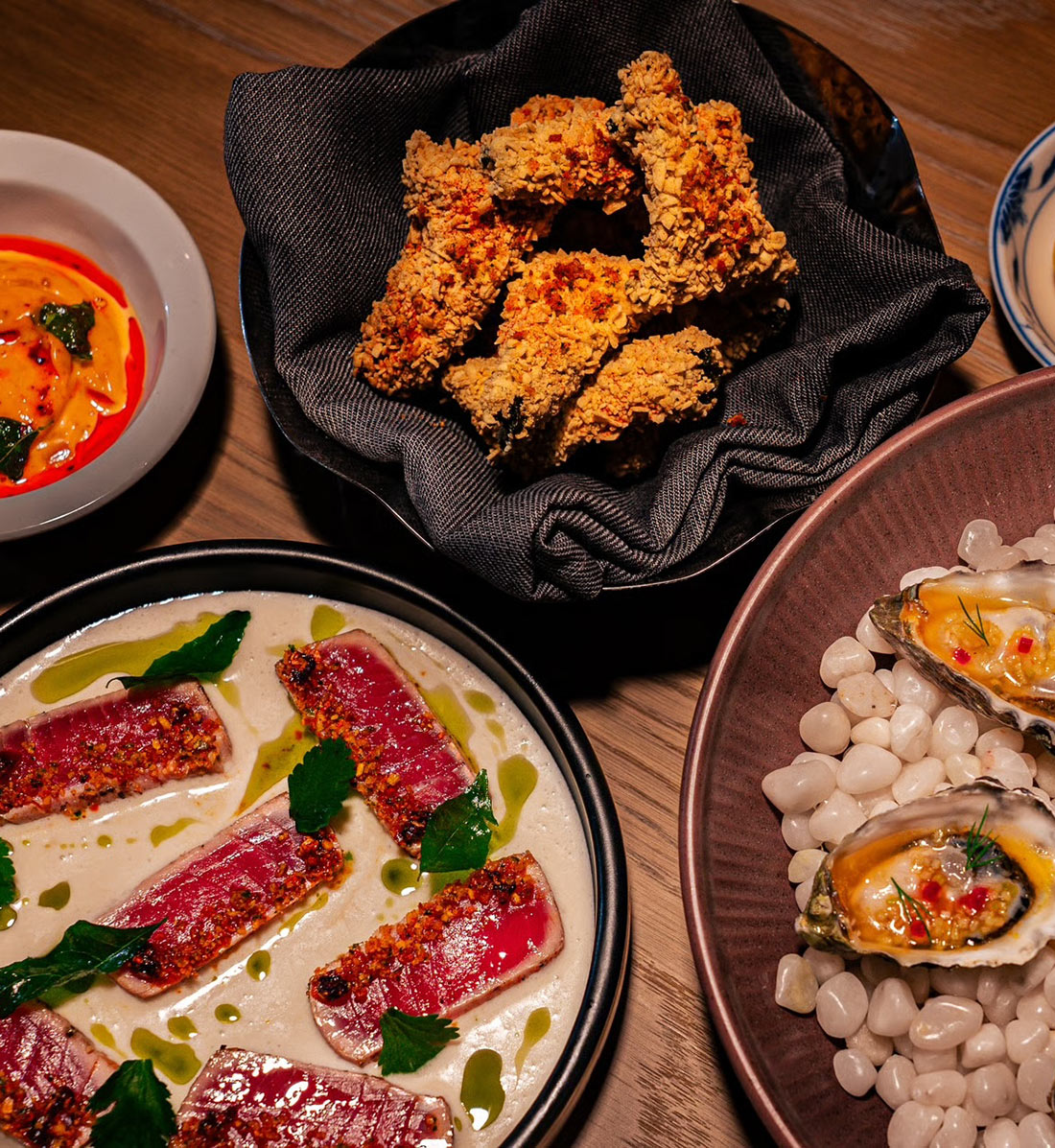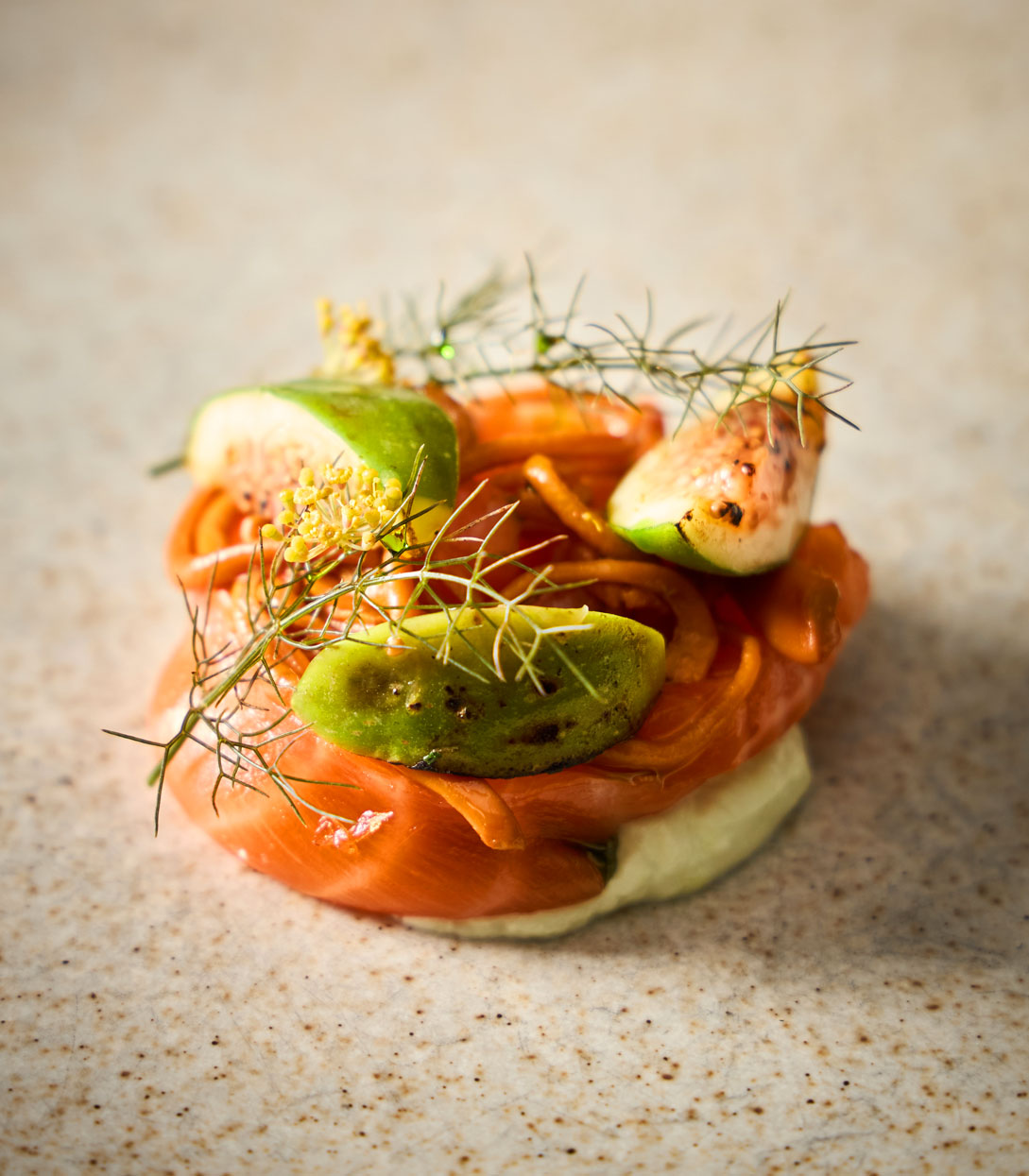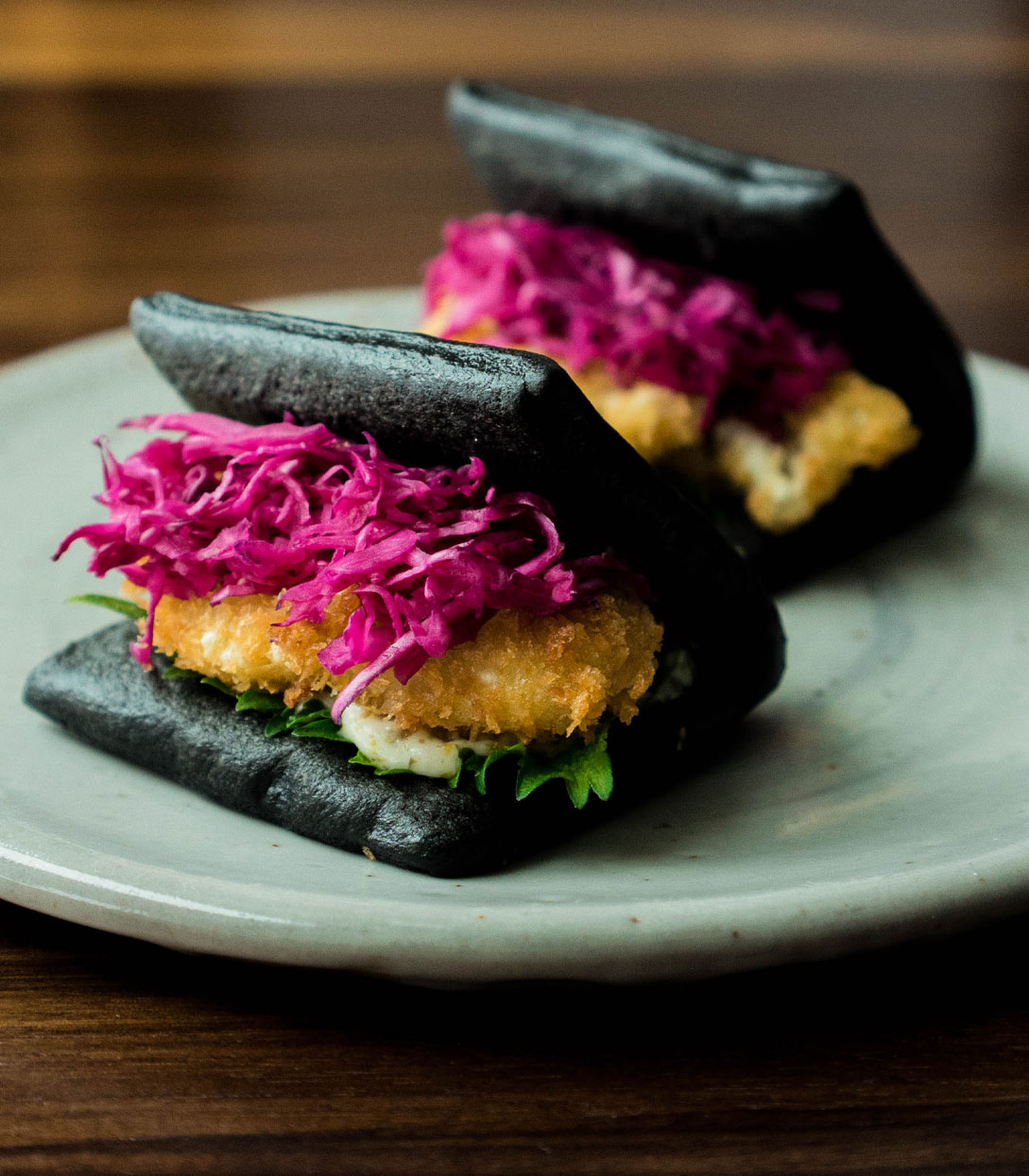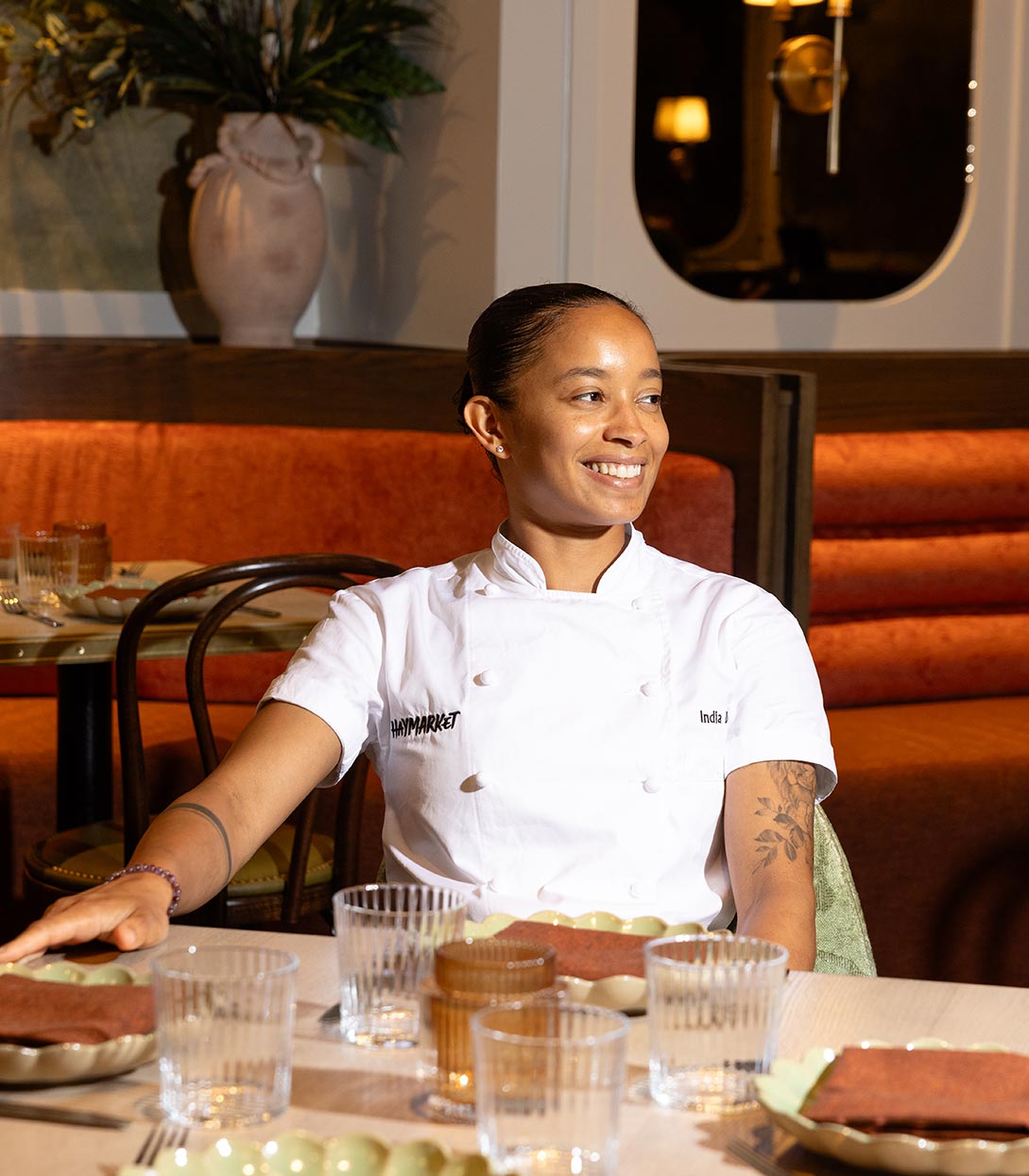Enrique Olvera’s mouth starts to water as he describes the mole that crowns the tasting menu at his restaurant Pujol in Mexico City. A moment later, when it arrives at our table pooled on a small plate and he has swiped his finger through it to capture a taste, his eyes light up.
That the mole here stirs such sensory enthusiasm in the veteran chef is perhaps a sign of the dish’s place in his career, a signature offering that has come to define his cooking style of exquisitely elevated age-old ingredients. It’s also a dish that he’s watched grow up in the most biological sense: For more than a decade, the same batch of mole has been reheated and remixed with a fresh one, producing a flavor that embodies the complexities and certainties that come with age.
The mole madre, or mother mole, as it’s called, has outlasted three Mexican presidencies, survived the pandemic, and watched as Pujol this year received one of Mexico’s first Two MICHELIN Star distinctions. It’s become so synonymous with the restaurant that diners complained after it was at first left off the menu at Pujol’s adjunct taco bar.

But as the restaurant looks towards its 25th anniversary next year, Olvera sees an opportunity for evolution, to bring the restaurant and its living, breathing headliner into a new stage of life.
“I think it's a little bit like what happened to Juan Gabriel when they asked him to sing ‘Querida,’” Olvera says of the mythic Mexican pop star and his trademark song.
“As long as people continue to like it, we will continue to do it,” he adds, before noting the upcoming quarter-century milestone. “We’re going to make several changes in the overall experience of the restaurant, and I think surely we’ll have to change the way in which the mole participates in that experience.”

When we speak last month in the restaurant’s lush courtyard, the mole is in one of its finest eras, its summer form, when the tomatoes and bananas that compose the peaks and depths of its flavor are at their ripest.
Dozens of ingredients make up the black mole recipe that is folded in every two days. At its base are onions, garlic, tomato, and cinnamon. Almonds, pecans, and peanuts bring in an earthiness, while more star anise than tradition dictates lends a brightness to the dish.
Taste and seasonality also play a role. When the kitchen detects that the spice level is low, they’ll augment the main chili, the chilhuacle, with others, like the ancho. Fruits that bring “liveliness” recur in the recipe at the peak of their season, Olvera says.

The path that the mole’s flavor follows over time “is more like a spiral than a line,” he says. “When it’s apple season, we put in apple, when it’s banana season, we put in banana, and the following year, you go back to banana and you go back to the apple.”
“What you look for when reheating a mole is for the ingredients to meld and for there to be a better integration of the ingredients into the whole,” he says.
Still, over its 3,500-day lifetime, the mole madre has gone through certain distinguishing phases. The story of the dish begins, like most moles in Mexico, with a celebration: the first anniversary of Quintonil (Two MICHELIN Stars), now a fine dining landmark down the street in Polanco.

For the party, Olvera and his team prepared a mole negro with the chilhuacle they had recently bought in bulk from farmers in Oaxaca as part of an initiative to save the chili from extinction. The sauce was served spooned over a lightly fried tortilla, a dish known as an enmolada.
In that first preparation, sesame seeds were sprinkled on top, like stars on a black night sky – a metaphor for mole as a celestial body, Olvera remembers.
The leftovers were taken back to the Pujol kitchen, where they were reheated and served each day until the supply ran low. Satisfied with how the mole had gotten smoother with each trip back to the flame – a technique Olvera says he learned from the chef Ricardo Muñoz Zurita, a renowned researcher of Mexican gastronomy – the original Quintonil batch was extended with the integration of a new one.

For over a year, the chefs at Pujol continued the cycle, penciling notes on the mole’s metamorphosing flavors into a logbook and adjusting around the edges. When the mole started to feel tired, displaying ashy and earthy flavors, Olvera says, the team introduced fruit into the recipe and designed the elegant plating that remains today, with a circle of a rust red mole made fresh that day nested in the center of the mole madre.
After its infancy as an enmolada, the dish was served with corn tortillas, then ones delicately pressed with an hoja santa leaf, and today, a trio: one made with hoja santa, one with a colored corn, and one with indigenous, criollo corn.
In the courtyard, after Olvera has passed over any maize or metal vessel in favor of his digital utensil, he explains that the way the mole madre tastes moves in cycles, too.
“It’s chili, then acidity, then spices come out, and then it begins again, see? It makes a loop: back to chili, acidity, spices. I think that’s something very beautiful,” Olvera says.

The next form the mole will take in the reimagined Pujol remains unclear. Several kitchen experiments, like a swirling multicolored plating, have so far been tossed. But Olvera betrays no hint of anxiety about the uncertain fate of his most important creation.
“Mole is both new and old, which is something I like a lot. Like the tortilla, mole belongs to the past, the present, and the future. When you manage to understand food in that way, I think there’s no anxiety about creativity,” Olvera says. “I feel that creativity is something that happens over time.”
Hero image: Araceli Paz / Pujol





















